Do you often lose focus or feel stressed during intense gaming matches? Research shows that breathing techniques for gaming can boost your focus, lower stress, and speed up reactions.
In this blog post, you’ll learn simple hacks like diaphragmatic breathing and box breathing to sharpen your skills and help you play better when it matters most. Ready to level up through better breathing?
Key Takeaways
Breathing techniques like diaphragmatic, box, and pursed lip breathing help gamers manage stress, boost focus, lower heart rates, and improve reaction times during intense game sessions.
Biofeedback gaming tools such as Chill-Out (2011), DEEP VR, HeartMath or EmWave2 teach paced breathing visually or with audio signals; research funded by the National Science Foundation confirms these methods effectively enhance gamer concentration and reduce mental strain.
Navy SEALs use box breathing—a method of inhaling for four seconds, holding breath four seconds, exhaling four seconds, then pausing again—as an effective way to quickly calm nerves under pressure; gamers apply this approach mid-match or pre-game for sharper decisions.
Practicing slow breaths at around 6 per minute (5-second inhale/5-second exhale) daily outside matches is recommended; studies published under Creative Commons Attribution License show it improves heart rate variability (HRV), raising overall performance in competitive play.
Maintaining good sitting posture while gaming supports proper diaphragm function—allowing deeper breaths that provide increased oxygen intake to keep players sharp even through long esports tournaments.
Table of Contents
Why Breathing Techniques Matter in Gaming
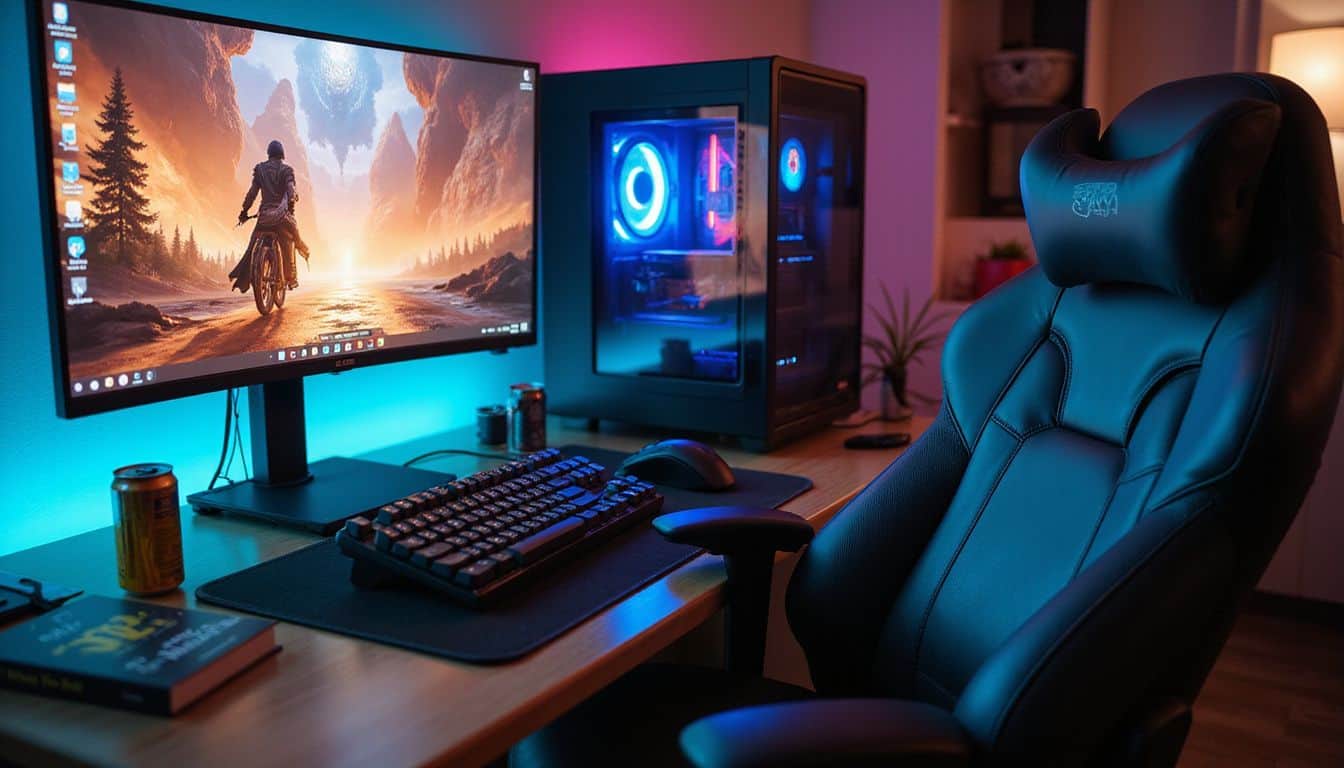
Smart breathing can reduce gaming stress and sharpen your mental focus. It helps boost reaction time, letting you perform better under pressure and avoid tilting.
Enhancing focus and concentration

Breathing techniques boost your ability to focus and concentrate during intense gaming sessions. Diaphragmatic breathing, also called belly breathing, boosts oxygen flow to your brain and sharpens reaction time for quicker moves in games.
Pursed lip breathing helps control your breath rate, lowering stress levels and soothing the autonomic nervous system (ANS). My own experience shows these exercises effectively improve emotional regulation during tough online matches or long battles at top online casino sites.
Game-based interventions are enjoyable ways of teaching deep breathing, says a recent study on biofeedback training with titles like Chill-Out that guide paced inhalation and exhalation.
By managing respiratory sinus arrhythmia, gamers maintain higher heart rate variability (HRV), which science links closely with improved attention spans and less mental strain under pressure.
Box breathing is another solid method used by top esports players because it balances heartbeat rhythms—key for keeping calm before crucial gameplays—and can help you stay locked into the zone as stress mounts mid-match.
Managing stress and reducing tilt
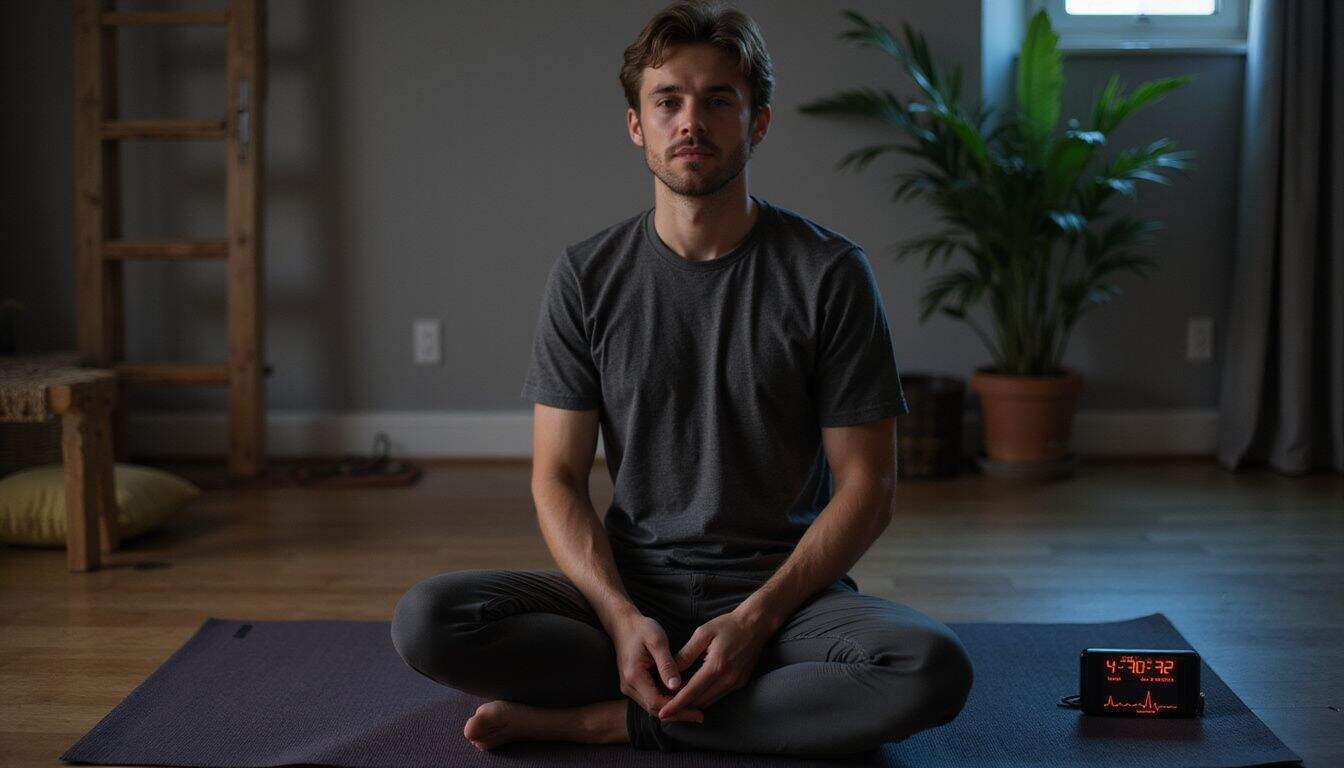
A sharp focus boosts your play but stress and tilt can quickly ruin it all. Many gamers develop poor breathing patterns after hours at their screens, raising mental stress and hurting their gaming skills.
Diaphragmatic breathing exercises between matches help you relax by boosting parasympathetic activity, which calms the body’s nervous system and drops heart-rate. Biofeedback games also teach relaxation techniques in a fun way, giving you clear visuals of your respiration rate and heart rate variability (HRV) changes during breath holds or box breathing training.
During stressful competitive play, I have used paced nose breathing to stay cool under pressure; this method stabilizes emotion regulation, eases anxiety levels, lowers blood pressure, reduces shortness of breath feelings and fights tilt for better matches.
Improving reaction times
Breathing techniques boost your reaction speed by enhancing focus and attention. Deep breathing, like diaphragmatic breathing, balances oxygen and carbon dioxide levels in the respiratory system.
This stability reduces stress that slows your reactions during tough gaming moments. Biofeedback games can also sharpen these skills by helping you control your breathing under pressure through visual or audio pacing signals.
Practicing these methods mid-match has helped me become better at FPS games, enabling quicker reflexes and stronger performance in tight situations.
Diaphragmatic Breathing for Gamers
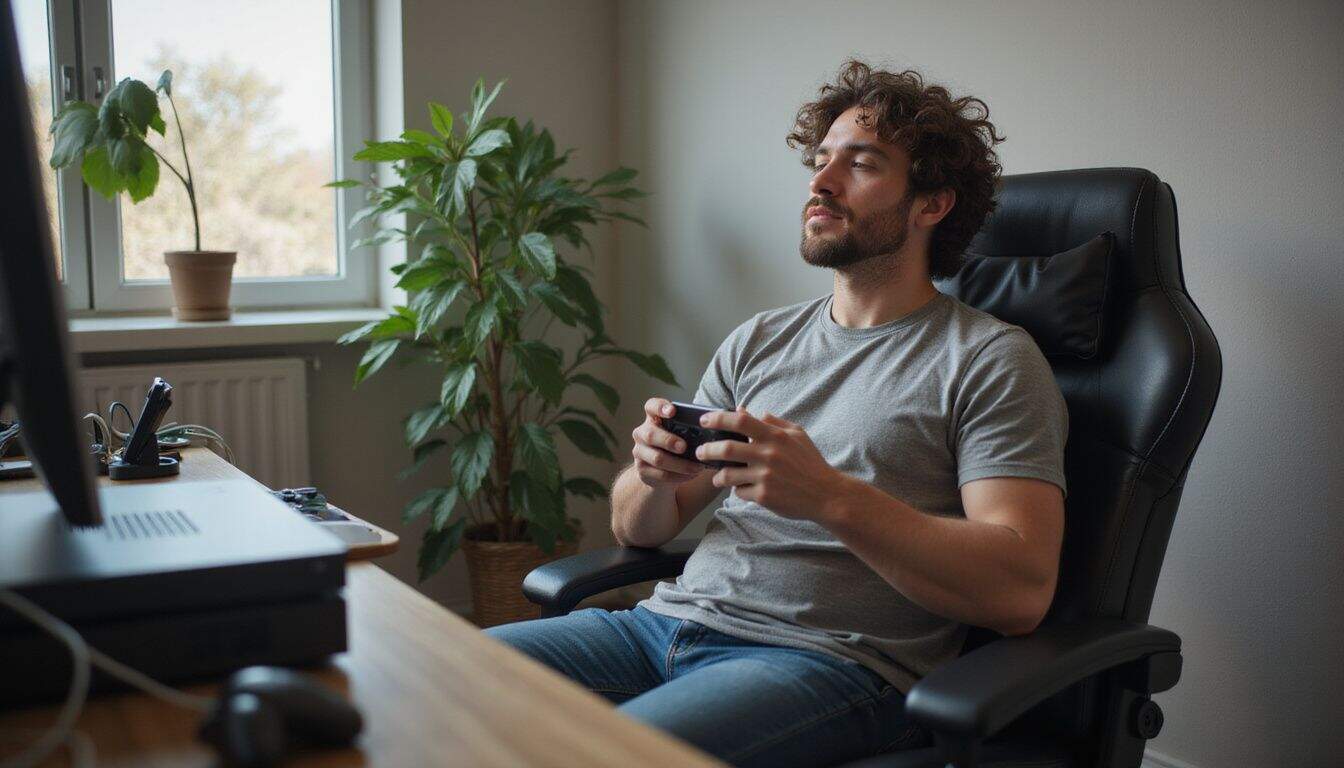
Diaphragmatic breathing lowers your respiratory rate and improves air exchange—helping gamers boost heart rate variability (HRV). With practice, it’s a powerful way to calm the autonomic nervous system and keep stress in check mid-game.
Understanding diaphragmatic breathing
Your diaphragm is a muscle below your lungs that controls your breathing rate and lung capacity. Gamers often sit with poor posture, which can limit this muscle’s function and cause shallow breaths, known as “chest breathing.” Shallow breaths reduce oxygen flow to the brain, lower concentration, increase stress responses like fight or flight, and raise heart rate variability (HRV).
Research even led to making biofeedback games such as Chill-Out in 2011; this game rewards deep diaphragmatic breathing but penalizes shallow breaths. Game-based methods are more enjoyable for gamers compared to traditional relaxation training tools.
Mastering these simple diaphragmatic breathing techniques sets you up perfectly for box breathing exercises linked in the next section.
Steps to practice effectively
Gamers can use diaphragmatic breathing to boost focus and lower stress. Regular practice will enhance oxygen intake, reaction times, and gaming endurance through efficient breathing.
- Sit up straight in your gaming chair, feet flat on the ground, shoulders relaxed—posture improves gas exchange for better oxygen flow.
- Place one hand on your belly and the other hand on your chest to monitor proper diaphragm movement during breathing techniques.
- Breathe in slowly through your nose for 4 seconds while focusing on pushing air deep into your diaphragm rather than just your chest.
- As you breathe out, purse your lips slightly—this pursed lip breathing style slows exhale speed, reduces flight or fight arousal, and lowers electrodermal activity related to gamer stress responses.
- Use audio pacing apps like Breathwrk as biofeedback tools—apps provide clear sound signals that guide steady inhalation/exhalation rhythms.
- Engage with game-based breathing interventions such as DEEP VR, which implement instrumental conditioning while teaching relaxation through virtual reality experiences.
- Aim consistently for 6 breaths per minute (5-second inhale/5-second exhale cycles), demonstrated by studies like those published open-access under Creative Commons Attribution License (cc by) to improve heart rate variability (HRV).
- Practice daily sessions of 10-15 minutes outside competitive matches so coping mechanisms become second nature during high mental workload gameplay scenarios.
- Check progress via VR HRV biofeedback devices after each session; these gadgets train gamers directly in managing chronic stress levels for improved autonomic nervous system function over time.
- Track skill transfer from exercises using metrics such as cardiac output reduction or increased dilation response post-intervention; achieving lower stress-related measures indicates mastery of effective diaphragmatic techniques in real-game performance situations.
Box Breathing for Stress Control
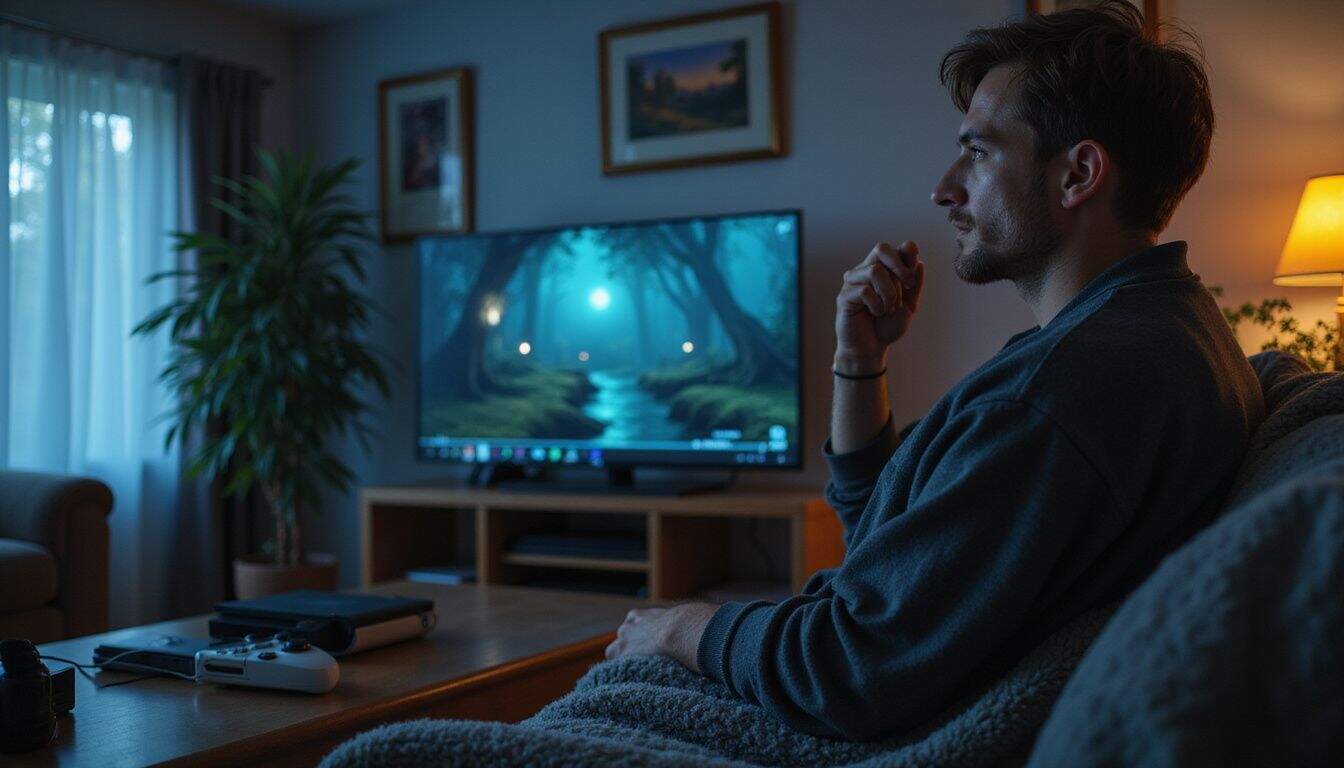
Box breathing helps you manage stress and stay calm in tough gaming moments—like an easy-to-use pause button for your nervous system. It can boost heart rate variability (HRV), helping gamers maintain better control of reactions and mood during gameplay.
What is box breathing?
This method involves four easy steps: inhale, hold your breath, exhale, and pause again—all for the same length of time (usually 4 seconds). Navy SEALs use this breathing technique to lower their heart rates in stressful missions.
It boosts oxygen levels while balancing carbon dioxide, which helps maintain homeostasis—the body’s stable state. Gamers can practice it between matches or before tough rounds to ease stress and sharpen focus.
Learning box breathing is quick and simple, making it a perfect fit as you move into mastering how to perform this skill next.
How to perform box breathing
Box breathing is a breathing technique gamers can use to quickly regain focus and manage stress. It balances the parasympathetic branch, lowering stress, sharpening attention, and boosting heart rate variability (HRV).
- Sit back in your gaming chair with your feet flat on the floor, shoulders relaxed yet alert.
- Breathe deeply through your nose for a count of four; feel air fully expand your belly into diaphragmatic breathing.
- Gently hold this full breath without tension for another slow, calm count of four seconds.
- Exhale steadily through your mouth or nose—whichever feels natural—for an even count of four seconds until lungs feel empty.
- Hold again at the bottom of that exhale for another relaxed but firm pause of four seconds before inhaling once more.
- Repeat these steps several times during intense gaming moments or between matches as effective stress management to prevent tilt.
- Keep all phases equal in duration; consistent timing helps maintain proper nervous system balance while gaming competitively.
- Practice box breathing regularly until it becomes second nature during sessions requiring high-level concentration like tough boss fights or stressful tournament play.
- Combine box breathing with mindfulness-based stress reduction methods to control anxiety, reduce panic disorder symptoms, and improve cognitive function under pressure.
- Use biofeedback tools—like wearable sensors—to check your variance in breathing rhythm and measure how effectively you’re calming down as you practice this technique over time.
Pursed Lip Breathing for Relaxation
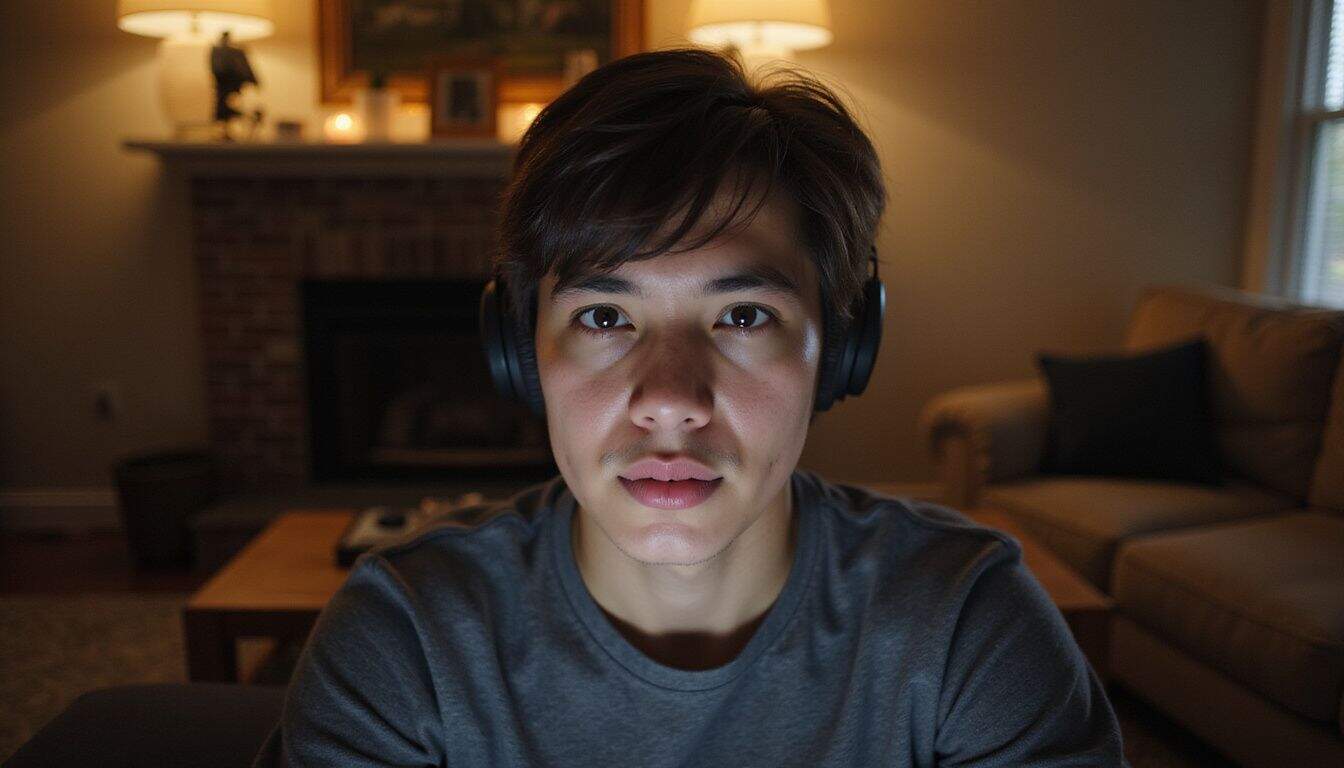
Feeling tense during tough matches? Pursed lip breathing eases stress fast and helps your heart rate variability (HRV) stay steady for better gaming.
Exploring pursed lip breathing
Pursed lip breathing is a simple breathing technique that can help gamers boost lung capacity and manage stress better during intense matches. You take in air slowly through your nose, then blow it out gently through lips pressed close together, like you’re softly blowing on hot soup.
Biofeedback games now have pursed lip breathing built into them to guide you using pacing signals or clear visual cues. These paced-breathing interventions support relaxation, reduce pressure, and improve performance by calming the mind while gaming.
Mastering pursed lip breathing is like getting an extra health potion mid-game—it keeps you steady when battles heat up.
How to use it while gaming
Now that you’ve explored pursed lip breathing, let’s connect it directly to gaming. This technique can boost relaxation, mood, and oxygen intake during gameplay:
- During tough matches, breathe in slowly through your nose for two counts and exhale gently through pursed lips for four counts; this slows heart rate variability (HRV), reducing stress and tilt during play.
- Set audio or visual cues within casual breathing games that guide your inhale-exhale rhythm; these guides train you to breathe at controlled rates for greater focus and attention.
- Use game-based biofeedback devices like HeartMath or EmWave2 to monitor respiration patterns while gaming; they reward optimal breathing by penalizing shallow breaths.
- Perform pursed lip breathing between rounds in fast-paced competitive games such as Valorant or CS:GO; studies show improved decision-making under pressure due to lower cortisol levels—important because chronic stress harms cardiovascular function.
- Try integrating paced breathing into practice sessions before major tournaments; research using two-sample t-tests shows significant improvement in gamers’ cognitive performance after a simple five-minute breathing intervention (p < 0.001).
- Experiment with different timing intervals—two seconds inhaling followed by extended four-second exhales—to increase mental clarity and decrease nervousness related to game difficulty spikes or intense multiplayer matches involving various types of gamers.
- Combine pursed lip exercises with diaphragmatic breathing techniques to optimize oxygen efficiency, boosting stamina during long gaming marathons like esports competitions lasting several hours.
- Maintain slower-breath routines throughout each session instead of reverting quickly back into rapid shallow chest breaths; research shows lasting benefits of reduced muscle tension and improved circulation from steady slow-breath practices compared with negative reinforcement associated short-term fixes like breath holding or air hunger methods.
Using Breathing Techniques to Handle Pressure

Before your next big match, a quick check of your heart rate variability (HRV) can signal if stress is high. Short breathing adjustments during intense matches help gamers manage pressure without losing focus.
Pre-match breathing routines
Pre-match breathing routines can boost gaming focus and ease stress. Gamers often neglect proper breathing due to sitting for hours with poor posture.
- Start diaphragmatic breathing at least 10 minutes before the match. This deep belly-breathing increases oxygen flow, improving alertness and lowering stress hormones.
- Practice box breathing to maintain steady heart rate variability (HRV). Breathe in for four seconds, hold breath four seconds, breathe out four seconds, then pause again four seconds; repeat five rounds.
- Use pursed lip breathing right before match start to relieve nerves. Breathe in slowly two counts through your nose, exhale gently through tight lips for four counts.
- Check your posture while doing these methods; optimal posture helps lungs expand better which allows deeper breaths.
- Biofeedback games like Chill-Out can teach paced breathing under pressure and are proven helpful by the National Science Foundation studies.
- Short pre-game practice using a biofeedback tool helps gamers build stress tolerance over time—an advantage observed in experimental groups.
- Quick bursts of focused breathing between warm-up matches raise oxygen intake quickly, increasing responsiveness during play.
- Stress-management experts suggest combining cognitive behavioral therapy (CBT) basics with breathing exercises for better control under gaming pressure.
- Adjust frequency and depth of breaths depending on your mood; shallower breaths energize you while slower deep ones calm anxiety or tilt behavior seen among gamers.
- Incorporate briefly timed game-based interventions rather than longer non-game sessions: research shows gamers prefer these short interactive techniques.
Now move forward to perfecting your “In-game breathing adjustments” for improved reaction times and smarter plays under gaming pressures!
In-game breathing adjustments
Breathing adjustments made mid-game can boost your focus fast. The right techniques help you react quicker, stay calm, and avoid tilt.
- Use diaphragmatic breathing to steady nerves during crucial moments. Deep breaths from your belly—not shallow chest breaths—balance heart rate variability (HRV) and cut stress.
- Try box breathing after a tough round or death in-game to reset quickly. Count slowly while inhaling for four seconds, hold for four seconds, exhale fully for four seconds, then pause again.
- Switch to pursed lip breathing between intense plays or matches as an easy way to relax muscles and sharpen thinking speed.
- Adjust the pace of breaths when pressure rises: if tension builds up fast in competitive rounds, slow down breathing rhythm slightly until you regain control.
- Integrate short “breath-checks” every ten minutes of gameplay with simple cues such as a timer beep or screen flash reminding players to breathe well.
- Apply “breathe light” methods mid-game—inhaling gently through the nose—to keep energy levels balanced without losing gaming immersion or attention span during long sessions.
- Keep biofeedback games like Chill-Out running nearby; these games track breathing patterns in real-time and show how shallow breath penalizes performance under stress conditions.
- Shift instantly into jogging booster breathing—shorter rapid inhales followed by sharp exhales—for quick reflex boosts when sudden threats pop up unexpectedly on-screen.
Bring these tips into competitive play to help decision-making under high stress situations—and give opponents fewer chances at victory—as the benefits of breathing skills continue growing among gamers everywhere.
Benefits of Breathing Techniques in Competitive Gaming

Learning to control breathing can boost heart rate variability (HRV), helping gamers stay calm in high-pressure matches. Gamers who use breathing methods often notice better stamina and quicker reflexes as sessions become intense.
Better decision-making under stress
Better breathing means sharper decisions during intense gaming moments. Diaphragmatic and box breathing reduce your physical reactions to stress, helping you dodge hasty moves that cause mistakes or “tilt.” Game-based breathing interventions make managing pressure fun and effective, boosting heart rate variability (HRV) for clearer thinking under tough conditions like competitive matches.
Using biofeedback tools gives real-time feedback on your breaths, keeping anxiety at bay so quick choices stay smart and focused—no matter how heated the battle gets.
Enhanced endurance during long gaming sessions
Gamers often forget about breathing while gaming, which hurts their endurance during long matches. Proper breathing skills improve oxygen flow and help you stay sharp for hours of gameplay.
Simple exercises like diaphragmatic breathing or pursed lip breathing can boost your stamina by supplying more air to your body between rounds. Biofeedback games that train deep-breathing lower stress levels too, cutting fatigue and extending playtime without losing focus.
Players using biofeedback methods report feeling calmer and fresher, so they perform well even after many intense sessions.
Using sensors that measure heart rate variability (HRV), these tools show gamers how their breath controls stress response in real-time on screen. This makes learning breath control fun and effective through direct feedback from game-based interventions, keeping players engaged longer with less strain.
To keep building this strength over time, check out how biofeedback tech works for gamer fitness next.
Overall performance improvement
Breathing techniques boost overall gaming skills by raising oxygen levels to the brain, sharpening mental clarity, and keeping you alert in crucial moments. Proven methods like diaphragmatic breathing and box breathing balance your body’s oxygen and carbon dioxide, easing stress during high-pressure scenarios.
I tested biofeedback tools that track heart rate variability (HRV) as personal experiments while gaming; these devices helped me visualize how paced breaths improved my reaction times and stamina for extended sessions.
Results show game-based breathing interventions provide lasting engagement since players stay motivated through interactive challenges—leading directly into our next topic on biofeedback’s role in mastering gamer focus.
The Role of Biofeedback in Gaming Breathing Techniques
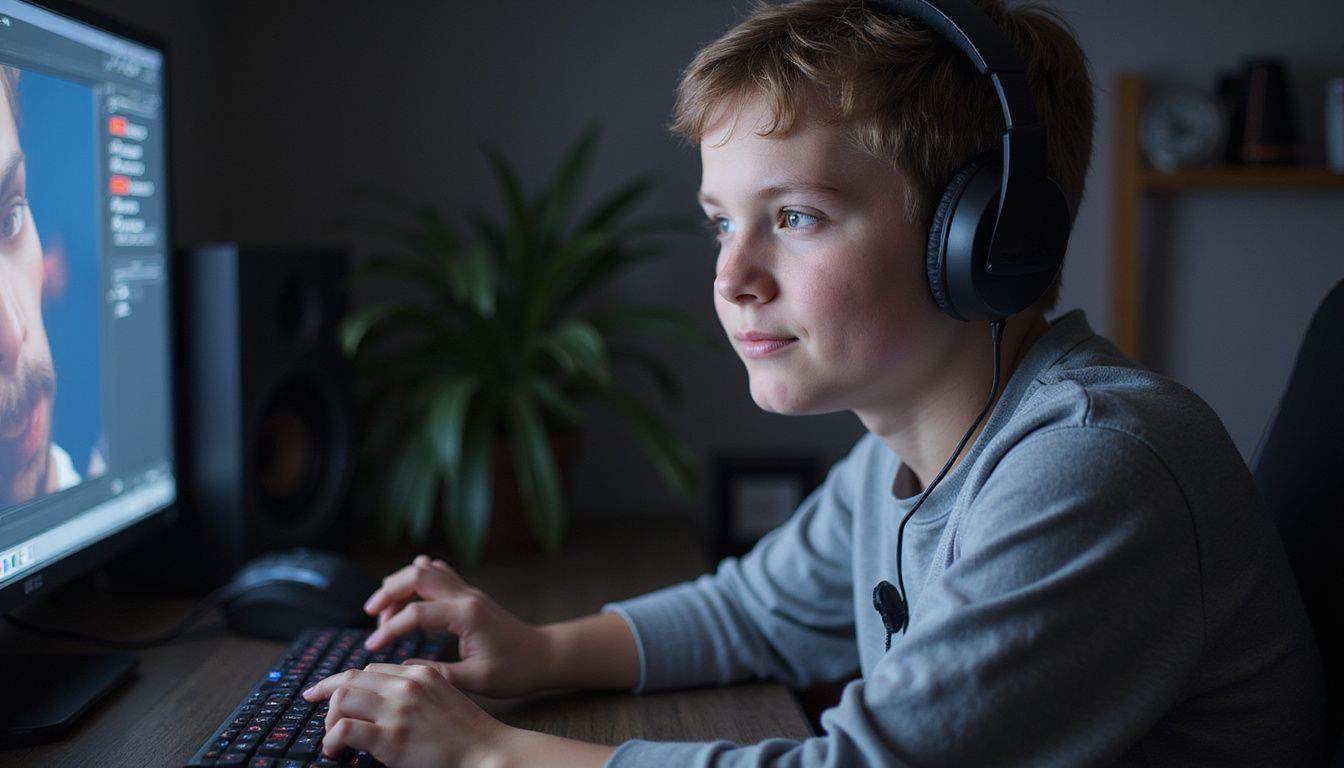
Biofeedback tools help track heart rate variability (HRV) and breathing patterns, giving gamers real-time insights—curious how these can boost your in-game focus?
Using biofeedback tools to monitor breathing
Tech gadgets that track your breathing, like visual biofeedback tools, give gamers an edge. These devices measure heart rate variability (HRV) and provide instant feedback on pacing.
Game-based biofeedback interventions are a fun way to boost relaxation training for stress management. Virtual reality (VR) headsets offer even stronger benefits; research shows VR biofeedback beats traditional techniques at cutting mind-wandering and increasing calm focus.
Gamers who use these smart breathing monitors quickly grasp effective pacing skills: “Game Biofeedback,” where you learn paced breathing directly through gaming scenarios, greatly helps skill internalization over time—while simpler approaches like “Pacing” methods work best for short-term relaxation outcomes.
Incorporating games that teach paced breathing
Biofeedback tools let gamers see how controlled breathing affects their heart rate variability (HRV) and stress. Combining biofeedback with games that teach paced breathing makes relaxing fun.
Studies show that players who use game-based breathing techniques gain better control over their focus, attention, and reaction speed during gameplay. The interactive format also helps gamers practice diaphragmatic or box breathing without the boredom of traditional exercises.
Game-based methods like “DEEP” or “Flowy,” available on Steam and mobile platforms, guide users into slower breaths through playful visuals. Participants say these games make relaxation more enjoyable while helping them lower chronic stress levels and avoid tilt in matches.
Yet keep in mind that game-like training can be less effective than standard approaches at teaching deeper breath control for serious gaming moments such as factorial design scenarios or stroop tasks where precise responses matter most.
Tips for Incorporating Breathing Techniques into Your Gaming Routine
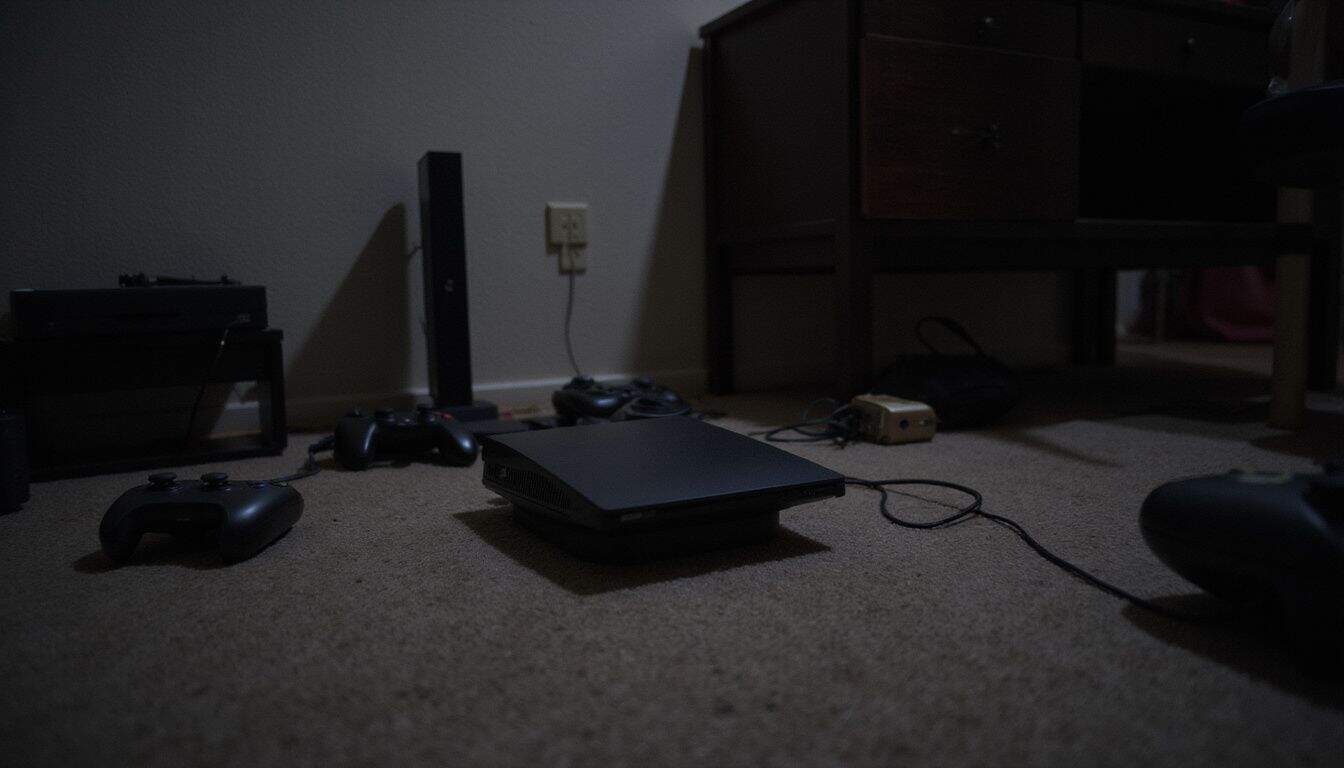
Set alarms on your gaming devices or use biofeedback apps to remind you about paced breathing—and there’s much more ahead, so keep reading!
Setting reminders for breathing exercises
Using breathing techniques as a gamer works best when you remember to practice regularly. Timely reminders can help you stay consistent and keep your gaming performance sharp.
- Use a phone app like “Calm” or “Headspace” to remind you several times daily to do diaphragmatic breathing.
- Create calendar alerts on Google Calendar before gaming sessions, so you pause and practice box breathing exercises for managing stress.
- Write sticky notes that say “do pursed lip breathing,” and put them around your gaming desk or monitor where you’ll easily see them.
- Wear smartwatches like Apple Watch or Fitbit with heart rate variability (HRV) functions; they buzz gently to signal when it’s time for calming breaths.
- Program desktop alarms on your PC or Mac with short labels, like “stress inoculation breathing break,” at hourly intervals during long gaming sessions.
- Ask friends in Discord groups you’re active in, especially other gamers who use breathing techniques, to message you reminders.
- Set custom Xbox or PlayStation notifications during breaks between matches, prompting you towards quick breathing methods that fight the effects of chronic stress.
- Place visual cues like small cards mentioning PTSD coping strategies next to controllers; this reminds your brain how useful paced-breathing habits are under pressure.
- Link reminders for mindful breathwork directly into Steam’s built-in overlay browser; open it between competitive rounds as motivation for sticking with routines over time.
- Keep biofeedback devices nearby that measure HRV patterns instantly, ensuring better tracking of alertness improvements gained through regular controlled-breathing exercises.
Practicing between matches
Between matches is the perfect moment for simple breathing techniques to boost oxygen flow. Techniques like diaphragmatic breathing or box breathing quickly improve your mood, enhance attention, and increase reaction speed for better game results.
Short sessions during breaks help keep stress lower, preventing headaches from long gameplay hours and reducing tilt risk.
Mindful practices between rounds also help manage heart rate variability (HRV), which closely links to gaming responsiveness. Tools such as biofeedback apps or paced-breathing games let you track improvement in real-time and keep motivation high.
Quick breaths today prepare you mentally and physically, improving overall stamina during intense competition later on.
Advanced Breathing Techniques for Pro Gamers

Level up your gaming edge with advanced breathing methods—boost stamina, sharpen reflexes, and outplay rivals.
Breathe light for stamina
Breathing light boosts your stamina in long gaming rounds. Breathing softly slows down your breathing rate and increases oxygen flow, helping you stay alert without getting worn out.
Virtual reality heart rate variability (hrv) biofeedback tools even use this gentle breathing style to help gamers relax better and keep focused under stressful conditions. Games like Scale include deep rhythm guides that teach paced breaths, lower stress response, and improve control while gaming.
Jogging booster breathing for reflex enhancement
Jogging booster breathing helps gamers sharpen their reflexes and stay alert during tough matches. Start by taking quick, short breaths through your nose, matching the rhythm to a brisk jogging pace for about thirty seconds.
Then slow down your breath rate gradually until calm again, practicing diaphragmatic breathing in between rounds or breaks. This technique can boost heart rate variability (HRV), helping you improve reaction times under pressure without physical exertion.
How Will Breathing Techniques Evolve Competitive Gaming in 2025?

Breathing techniques will level up competitive gaming performance in 2025 by boosting gamers’ focus and attention. New VR heart rate variability (HRV) biofeedback tools are projected to beat standard methods, helping gamers relax their minds and limit mind-wandering.
Experimental treatments combining game-based biofeedback with paced breathing have already shown effective results for improving gamer concentration. Casual games could soon include built-in breathing guides to increase player focus and keep gaming fun.
Game-driven breathing interventions may lower dropout rates thanks to improved relaxation skills, but they will demand proper training for multi-tasking skills during gameplay. Stress inoculation training strategies like box breathing or diaphragmatic breathing—currently adopted from practices designed to ease depression, post traumatic stress syndrome, anxiety and other issues—will become more popular among pro players aiming for peak attentiveness.
Game creators might even begin using testing methods such as one-way ANOVA studies on interaction effects of these new approaches before publication.
People Also Ask
What are breathing techniques, and how can they help gamers improve focus?
Breathing techniques involve controlled breaths to calm your mind and body. Gamers who practice diaphragmatic breathing can lower stress levels, sharpen attention, and boost gaming performance.
How does diaphragmatic breathing differ from regular breathing during gaming sessions?
Diaphragmatic breathing means taking deep breaths using your belly rather than shallow chest breaths. This deeper method increases oxygen flow to the brain, helping you stay alert and focused while playing games.
Can practicing specific breathing methods enhance heart rate variability (HRV) for better gaming results?
Yes, certain breathing exercises directly improve heart rate variability (HRV). A higher HRV signals a relaxed yet ready state—perfect for quick reactions and clear thinking in intense gameplay moments.
How often should gamers use these breathing techniques to see noticeable improvements in their concentration?
Gamers benefit most by practicing these simple but effective methods daily—even just five minutes each session helps build lasting habits that noticeably level up focus over time.
